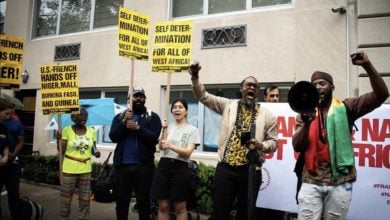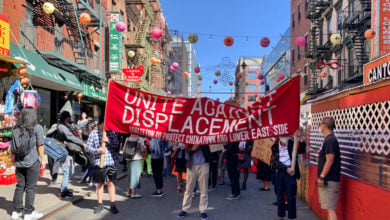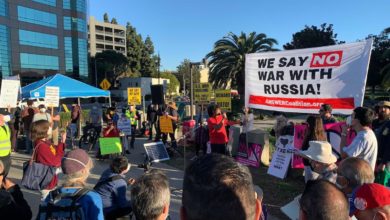It has been 40 years since the Ohio National Guard opened fire on a group of unarmed Kent State students, killing four and injuring nine. While the right-wing media tries to distort the truth of what took place on May 4, 1970, the true nature of the events reflects the significance of the anti-war movement during the Vietnam era.
 |
Leading up to May 4,1970, the war had grown so unpopular that even the right-wing imperialist Richard Nixon was forced to pledge an end to the Vietnam War if elected president. Congress had also created the draft lottery, which purported to end racial and class bias behind the draft. Further, soon after coming into office Nixon announced the withdrawal of 150,000 troops from Vietnam. This led some in establishment circles to hope that the anti-war movement would now wind down, along with the war.
All this changed on April 30, 1970, when President Nixon announced the invasion of Cambodia. This escalation rapidly reignited anti-war sentiment across the country. Shortly after the president’s announcement, 200 State Department workers resigned, strikes spread across 60 campuses, and demonstrators stopped traffic in downtown Cincinnati.
On May 1, 1970, Students for a Democratic Society, called for an anti-war demonstration in the middle of downtown Kent, Ohio, which would be followed by a massive rally on May 4.
The May 1 demonstration grew in size and militancy. On May 2, the local ROTC building was torched. The then-mayor of Kent, Leroy Satrom, contacted then-Governor James A. Rhodes in a panic. Gov. Rhodes ordered the National Guard to Kent and imposed martial law on the city.
The mayor, as well as the governor, used the media to attack protesters and sow division between the working-class residents of Kent and the students. The governor is quoted as saying, “They’re worse than the brown shirts [Nazis] and the communist element and also the night riders [Ku Klux Klan] and the vigilantes.”
While the media described the Kent State students as unruly, out of control and violent, violence did not begin until the National Guard arrived. The National Guard, along with help from the Kent Police Department, not only arrested hundreds of students within two days, but also beat and even bayoneted numerous citizens of the town.
The governor, the mayor and the dean of the university told the students that they must cancel the anti-war rally on May 4. They even forged fake flyers of the rally’s cancelation in order to dissuade students from attending. Nevertheless, hundreds of students gathered in opposition to the invasion of Cambodia and the harsh treatment they had received at the hands of the authorities.
On May 4, the National Guard fired on unarmed student protesters.
The media immediately tried to spin the events of what took place that day at Kent State. They portrayed the scenario as a standoff between the students and the National Guard. Video and photographs revealed what actually happened.
The National Guard killed two students, Sandra Scheuer and William Knox Schroeder, who were not even part of the demonstration. The nearest shooting victim, Joseph Lewis Jr. was about 60 feet away from the National Guard. The students posed no threat to the National Guard.
The Kent State shootings caused further unrest. Thirty-five college presidents called for withdrawal, while students at over 350 campuses launched strikes. Eventually, roughly 500 campuses closed down for some period of time, 50 for the remainder of the semester. In 16 states, the National Guard was mobilized to “keep order” on campuses.
Ten days after Kent State, Mississippi State troopers fired 300 bullets into a dormitory at historically Black Jackson State University killing two, which sparked demonstrations on 50 campuses.
To this day, no member of the National Guard has ever been punished for the Kent State shootings. We deplore this lack of legal action, and further salute the students at Kent State who stood against the brutal imperialist war in Southeast Asia. Mass outrage at the Cambodia invasion and Kent State shootings ignited a new surge in anti-war activism across the country, including into areas in which it had not previously penetrated. The example of Kent State can show us that today, when the president claims to be winding down one war while escalating another, the role of the anti-war movement is as important as ever.






